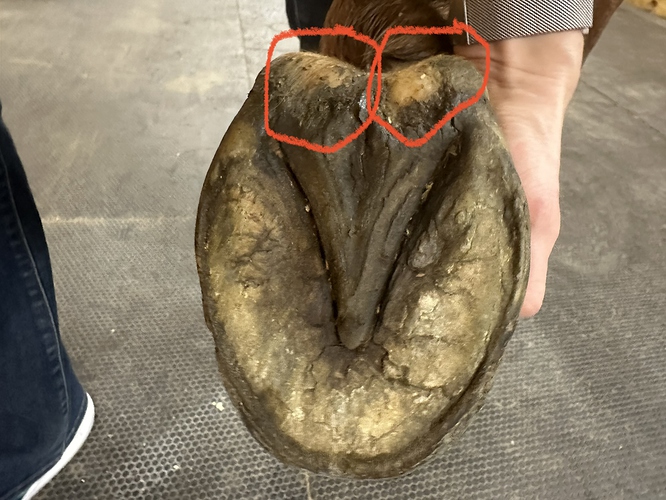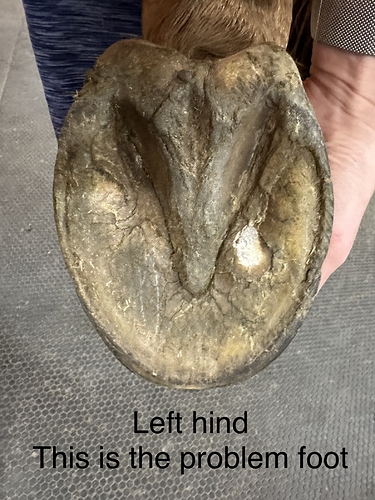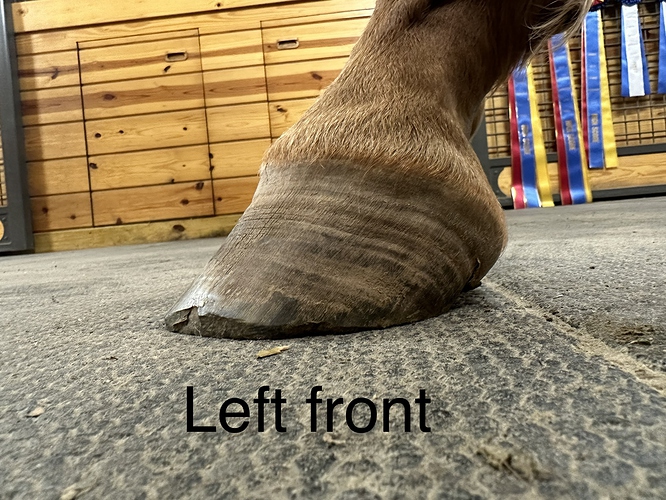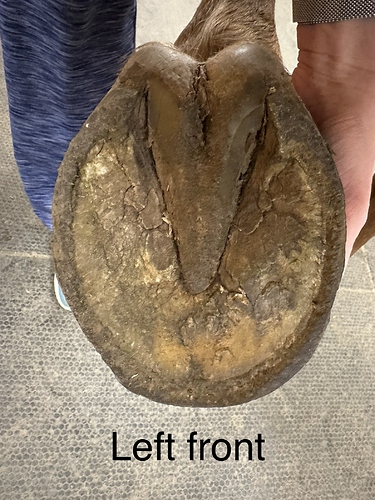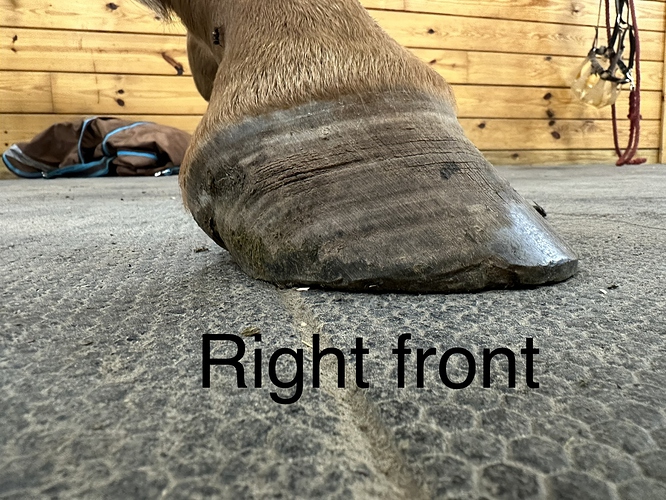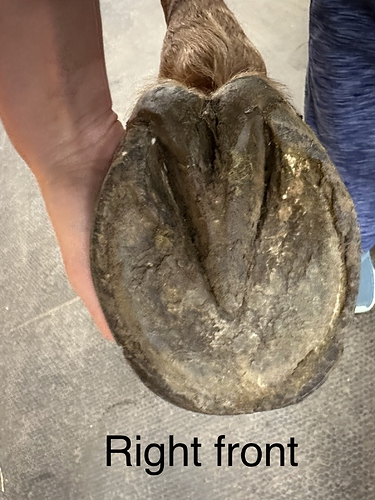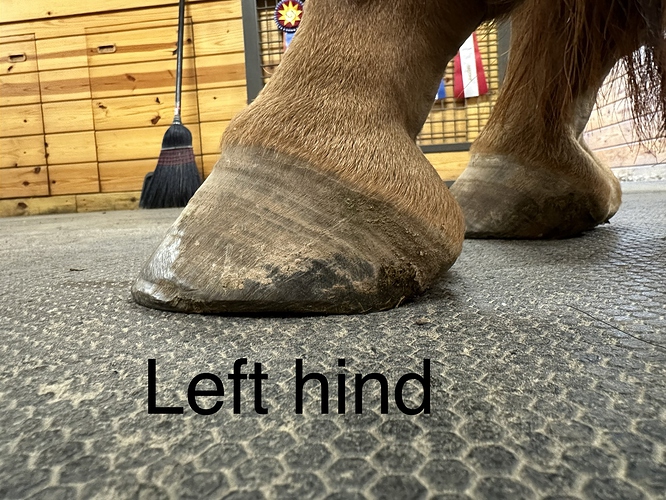Super feedback, thank you. We are well on the road of permanent NQR, unfortunately. There is a long history to this horse that I won’t get into too much detail here (back problems, PSD, now stifle), but I agree that the foot (in my opinion) has created a lot of these issues for this horse. Finding a competent farrier/trimmer has been absolutely impossible - I’ve gone through 4 over the last two years - one that started this mess, one that was good, but putting her in too small a shoe and leaving too much heel hanging over the back, and keeping the heels super contracted, one that was 2 hours trailer ride away (he may have been fine, but was impossible to talk to so it was his way or the highway, and frankly just too far), and now the current one (a short trailer ride, but a whopping $400 for a full set with pads(!)). The current one is pretty darn good for the area - keeps multiple FEI horses sound and in work, but, due to frog/heel pain when she had pads on, did a V-cutout for the frog. I’m pretty sure that cutout made the frog prolapse worse (confirmed on radiographs, which I’ve been getting 2x or more per year for the last two years to track progress), hence taking her barefoot once the stifle injury was diagnosed to try and help the hoof that way. While the current one has done a nice job getting the contracted heels to open up a bit, he just can’t seem to get the heels back where they need to be.
But back to the issue of a competent farrier - I promise I’m trying lol. Getting the heels “back,” versus letting them migrate forward, has been a constant challenge. How does one do this? What can I tell a farrier (who is willing to listen) to do in order to accomplish this? The folks I follow on facebook who seem to have “the solution” put horses in wedge pads to get bony column alignment, but it’s never quite clear how that fixes the hoof/heel position such that you can one day get the horse out of wedges. Keeping the toe shorter is a lot easier to communicate/achieve, but the heel thing is challenging.
She was just trimmed a few days ago, and I will try to get pics tonight as I would love to hear everyone’s thoughts.
Thank you SO MUCH everyone for the feedback/observations. It’s been a real struggle and heartbreak (and ~$15k in vet bills with multiple specialists, trips to NBC, surgeries, etc) with this horse over the last few years.

